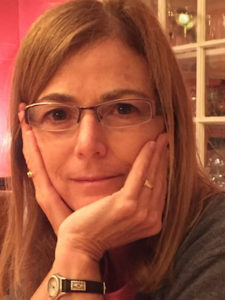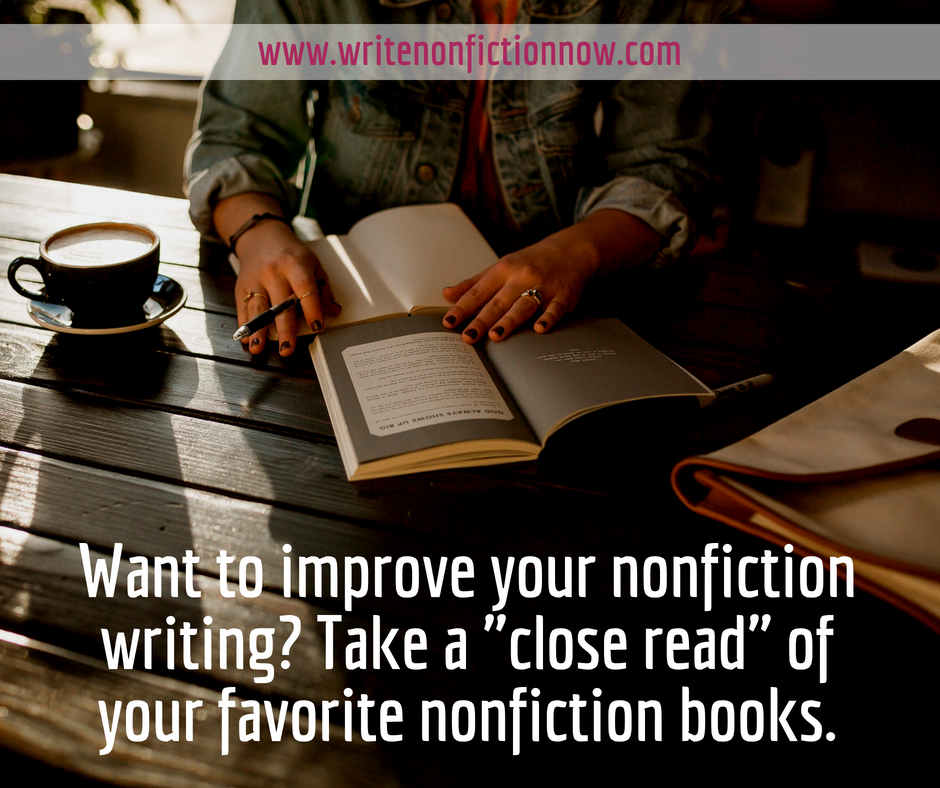The writer chooses nonfiction as a medium because of a desire or a need or a drive to understand a portion of the world and to record and respond to that understanding.
~The Nonfictionist’s Guide: On Reading and Writing Creative Nonfiction by Robert L. Root, Jr.
I’ve been attracted as both a writer and a reader to nonfiction for many years. This interest comes from my need to understand a portion of the world, as Robert Root describes in the epigraph above. I remember the awe I felt years ago when I came across Francine Prose’s book, Reading Like a Writer: A Guide for People Who Love Books and for Those Who Want to Write Them. I loved the subject matter of the book and, in particular, found helpful advice in Prose’s discussion of the way “close reads” of authors she’d admired had been instructive for her own writing:
“I read for pleasure, first, but also more analytically, conscious of style, of diction, of how sentences were formed and information was being conveyed, how the writer was structuring a plot creating characters, employing detail and dialogue. And as I wrote, I discovered that writing, like reading, was done one word at a time, one punctuation mark at a time…changing an adjective, cutting a phrase, removing a comma, and putting the comma back in.”
When Joan Didion’s book, The Year of Magical Thinking, was released, I was in the middle of working on a personal essay about illness. Already familiar with Didion’s work and enticed by the title, I purchased a copy. The first few pages compelled me to keep reading.
The Year of Magical Thinking was illuminating and helped me conjure deep emotions and personal observations that played over and over again in my head. I recognized that it was not only okay to write about them, but the essay necessitated that I do so.
To be clear, my writing style did not copy Didion. Her book gave me permission to explore my thoughts and feelings about illness and strive for creative ways to express them.
During the essay editing process, a word or sentence I’d spent a long time agonizing over would end up making the final cut. And other times, I omitted them. Whether they stayed in the final version or not, just writing them in the first place made it possible for me to write the best essay I could.
Over the years, I’ve returned to Didion’s book multiple times, paying particular attention to her voice, concise sentences, and aptly expressed realizations. “Life changes in the instant. The ordinary instant.”
Look for Nonfiction Writers that Inspire You and Your Writing
I’m always on the lookout for content that inspires me— one word at a time. I believe that, even if writers already have a list of go-to authors who inspire them, the time may come when it behooves us to widen our reach and expose ourselves to more nonfiction writers’ books and essays.
If you’ve never made a conscious effort to read like a writer and document your findings, then this post is for you. I’ll walk you through a few of the steps. To complete them, you’ll need a nonfiction book or essay you haven’t read before (see below for advice on choosing one), a journal, and a pen.
Let’s get started.
8 Ways to Read Nonfiction Like a Nonfiction Writer
1. Choose a book to read.
Browse your independent bookstore’s non-fiction sections or local library bookshelves. (Or find an unread book that’s been on your nightstand.) Notice what book titles and covers grab your attention. Open a book and read the first paragraph. Decide if this is a book you want to purchase or check out of the library.
2. Examine the first paragraph of the book.
Once you’ve chosen a book to read and work with, record the title and author in your journal. Then, copy the first paragraph of the book or essay in longhand into your journal.
Ask yourself a few questions: Did the first few sentences work for you? Did you want to continue reading? Did the author make a “contract” with you—a promise of what the piece is about and some sense of what is at stake.
In Alice LaPlante’s book, The Making of a Story, she suggests four characteristics of a good book opening:
- It keeps the reader wondering, “What happens next?”
- It establishes the tone of the piece.
- It immerses the reader in the physical world of the piece.
- It introduces characters and situations.
Describe in your journal everything you found engaging in the first paragraph of the book you’ve chosen.
3. As you read the book or essay, jot down notes in your journal.
Notice how the first chapter stimulates and maintains your curiosity. Were there particular details—words, images, rhythm or beats to the writing, setting, point-of-view, or a theme that made that happen? Write down all the examples that apply.
4. Note how the author handles transitions.
How did the author go from scene to scene or section to section? Did the author use white space? Note examples of the specifics you liked.
5. Notice about the author’s use of punctuation.
Are there notable examples of the way the author used a period, semi-colon, colon, or em-dash? Write down a few examples.
6. Look for indications of how the author handled the passage of time.
Were there places where you thought the author moved too quickly? Stayed too long? Caused confusion?
7. Identify the techniques the author used to keep you interested throughout.
Did the beginnings and endings of chapters or sections compel you to continue reading? Why (or why not)? Could you get a sense of the author’s voice or personality, and did that keep you engaged?
8. Compare the ending and the beginning of the book.
How did the last chapter relate to the first? Was the ending satisfying? How does the last paragraph compare to the first?
Continue to read other nonfiction books, and document what you discover about non-fiction writing. Then consider applying lessons you’ve learned to a new piece of your own or one you’re currently writing or revising.
Become a Student of Nonfiction Writing
You don’t have to be enrolled in a writing program to learn how to improve your nonfiction writing. You can learn from the many invaluable resources available to you—and use them as a university of your own making.
If you prefer to listen to talks or lectures, you can find many great podcasts on iTunes Google Play or even Spotify. Watch videos on YouTube or search out TedTalks. There are many high-quality websites, magazines, and books dedicated to furthering a writer’s day-to-day writing experiences as well. And, in particular, check-out, The Nonfictionist’s Guide: On Reading and Writing Creative Nonfiction by Robert L. Root, Jr. (When you’re done perusing these resources, search for more!)
My personal favorite online resource right now is Assay: A Journal of Nonfiction Studies. I felt like I discovered a goldmine when I first landed on their homepage! The site’s purpose says it all: “to publish the best critical scholarship of creative nonfiction texts, to facilitate all facets of nonfiction conversations in a variety of disciplines, and to be a resource for writers, scholars, readers, and teachers of nonfiction.”
On Assay’s website, you’ll find current and back issues containing articles, conversations, and pedagogy. Nonfiction writing instructors share their syllabi, favorite essays to teach, writers to read. Plus, you can access a list of nonfiction reading by topic and their nonfiction conference panel reports. Perhaps the crème de la crème of the site is Assay’s Best American Essays data project. It includes the name of the author, the title of the essay, the journal it first appeared in, the BAE edition it appeared in, whether it was a notable or a reprint, and the gender of the author.
Keep looking for inspiration from other nonfiction writers. Carefully study their work. Notice what you’ve learned from reading their books and how those revelations influence your writing.
Tell me in a comment below what you learn from close reads of the works of nonfiction authors you admire.
About the Author
 Deb Hemley writes memoir, personal essay, short fiction, and articles about social media. She has published pieces in Biographile, Hippocampus Magazine, All That Matters, and Survivor’s Review. You can follow her on Twitter @dhemley.
Deb Hemley writes memoir, personal essay, short fiction, and articles about social media. She has published pieces in Biographile, Hippocampus Magazine, All That Matters, and Survivor’s Review. You can follow her on Twitter @dhemley.
Photo courtesy of David Iskander on Unsplash

Carolyn Nevin says
This was an excellent article, and quite helpful. Thanks.